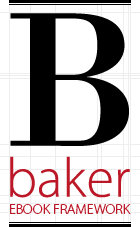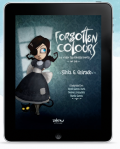 I’m proud to present an interview with a former colleague who I respect quite a bit: Davide Casali, a hybrid interaction designer from Italy who now works in London with Headshift and is one of the co-founders of the open source Baker ebook framework. He blogs at Intense Minimalism and is @Folletto on Twitter.
I’m proud to present an interview with a former colleague who I respect quite a bit: Davide Casali, a hybrid interaction designer from Italy who now works in London with Headshift and is one of the co-founders of the open source Baker ebook framework. He blogs at Intense Minimalism and is @Folletto on Twitter.
SARA: What is the Baker framework?
DAVIDE: Baker Framework is a very simple idea: use HTML5 for books and magazines. In many ways, it’s like the missing piece between the book and the web: it allows the creation of enhanced, multimedia books with web technologies. Even if you can tweak a lot current standards like epub2 and mobi (and the upcoming epub3 is even more interesting) you can’t really create a rich, interactive and high quality book or magazine with these. That’s exactly what Baker is for.
The good part is that the Hpub format we are defining alongside Baker is just a set of HTML files zipped, so it’s also ready out of the box for the web.
SARA: Why were you inspired to create it?
DAVIDE: When I saw the iPad for the first time I almost immediately hoped for a new platform and format for digital books. I know I probably read too much science fiction, but I almost felt what could be possible in terms of the reading experience. Unfortunately since April 2010 nothing new has appeared: we’re still stuck to epubs, or we are forced to use Adobe tools and build complex – even if rich – magazine applications.
So by then the months were passing and I kept thinking: “It’s so obvious, HTML5 and ebooks on the iPad, why is nobody doing that?” Then with Marco and Alessandro we started building it alongside the first book, 5×15 in Tokyo, and every time we read a title about ebooks we were worried to see our idea built by someone else. Up until now, we are still the only one out there.
SARA: Who is the Baker framework intended for? (How) can a non-techie use it?
DAVIDE: The framework has a quite broad audience, from developers to authors to publishers. You can use it standalone or integrate it with your own application – like someone already did and successfully released on the App Store.
It’s possible for a non techie to use it: we’ve received good feedback from authors that are using iWeb to build the visuals and then they follow the step-by-step instruction we provide to build the app.
However this is one of the parts I’m not truly satisfied with, even if it’s already quite simple compared to similar solutions. I’d love to provide a really simple publishing experience to anybody, it’s something that we planned in some way, but as of today it isn’t there: it requires a lot of work, and that might come from the community itself, we’ll see. 😉
SARA: Can you point us to some interesting projects already using the framework?
DAVIDE: Sure! There are two recent releases that I find very interesting, both for concept and the result. One of them is Forgotten Colours by Play Creatividad from Spain, a great conversion of a successful book that’s a collection of inspiring short stories about colors, with interactive elements. Another one is Timbuktu, an Italian interactive magazine specifically designed for kids. Both of them were very well received with great online coverage.
 SARA: What’s next for Baker framework? What about you?
SARA: What’s next for Baker framework? What about you?
DAVIDE: We have already a few big features in place for the next version, that is probably going to be 2.0: orientation support (portrait, landscape or both) and iPhone support, two top-requested features. We are still working out a few things, so I can’t give you a precise date, but it should be somewhere in the next couple of months.
For me Baker is a really interesting experience because it’s probably the most successful open source project I’ve ever done and I’m learning a lot from it. The response we are receiving from both authors and developers is very energizing and we keep getting confirmations that it’s a good thing. I think we are also moving forward quite fast: if you think about it, the first release was in November, just 5 months ago and we already managed to push out the 1.1 version a couple of months ago. So there’s no next for me now… unless you count a few other side projects, but for these only time will tell.
SARA: Some resources to get started with the Baker framework:
DAVIDE: Even if the framework itself is quite simple and our official page is very clear, that’s something we are working on to improve. As of today the biggest resource is Google and our lively community on GitHub, but we are planning some more tutorial-like content published directly on the website in order to help less tech-savvy people.
Visit the Baker Framework site.
More information on the Baker framework:
- Baker ebook framework on Mashable
Categories: Ebooks





For my diploma thesis, I built a digital magazine with HTML5, CSS and the OpenSource Framework Baker for iOS.
I just wanted to share my experiences of building digital publications with HTML5, so I released all of my files, fully commented and wrote an extensive “How-to-use”-Guide. If you have time, feel free to have look around! 😉
http://www.lakercompendium.com
If you have any suggestions or comments, please don’t hesitate to email me.
Florian
@Florian – looks great, thanks for letting us know about it! 🙂